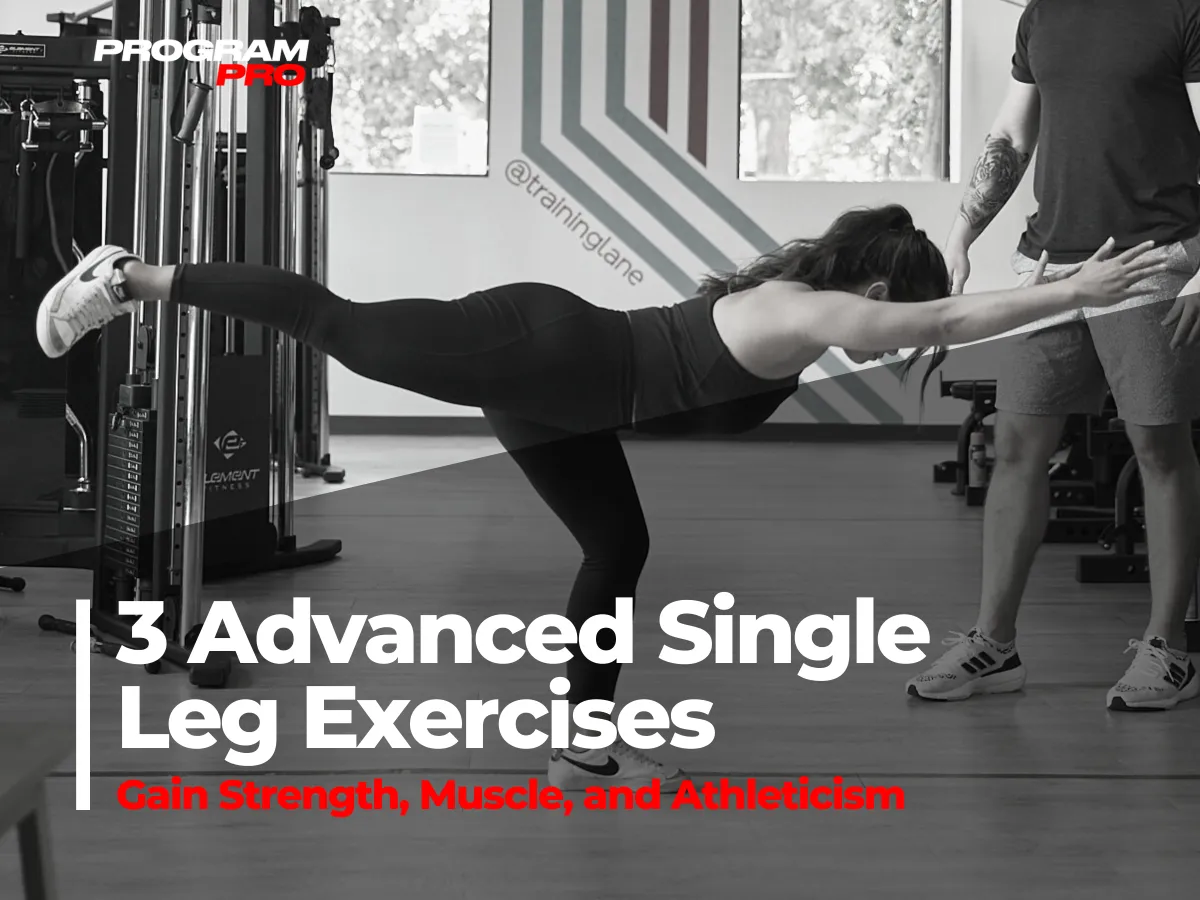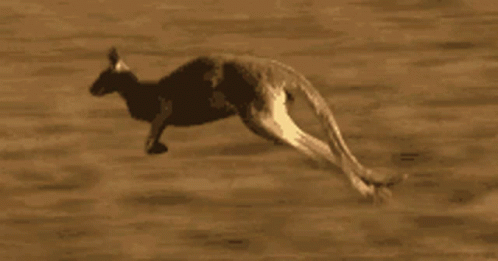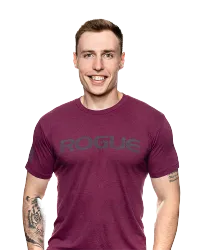
Program Pro Blog

3 Advanced Single Leg Exercises
It's a beautiful, sunny morning.
You're walking to your favourite coffee shop and notice something strange.
Everyone's hopping like kangaroos.

Hmm.
Life happens one leg at a time (walking, running, jumping, kicking).
So, why do so many trainers neglect single leg training?
"You can't get strong doing split squats and other single leg crap. You gotta squat."
Au contraire mon frère.
You can get very strong. Just follow Mike Boyle and see what his athletes are lifting on one leg if you don't believe me.
I won't regurgitate the plethora of benefits that come along with single leg training. I assume you're already sold on the idea since you're reading this.
Here are three advanced single leg exercises to help you and your clients build freaky strength and scare the fuck out of everyone else in the gym.
1. Skater Squat
Coaching Cues
Find your feet. Strength comes from the ground up. Always make sure you're in a good stance and find your feet first.
Heel to butt. Bend your free leg and bring your heel up towards your butt. You should feel your hamstring engage.
Squat and reach. As you squat down with your stabilizing leg, reach forward with your arms and try to touch the wall in front of you.
Progressions and Regressions
Anterior Lunge (Easy). This is basically a reverse lunge, except your back leg stays straight. It's a great teaching tool for the skater squat as you can use some assistance from your back leg.
Hand-Supported or Reduced ROM (Medium). After your client gets comfortable with anterior lunges, try an assisted skater squat by holding on to TRX straps as you perform the movement and/or elevating the foam pad to reduce the range of motion. Overtime, lower the pad to increase the ROM until your client can perform a full skater squat.
Weighted or Increased ROM (Hard). Start with a goblet position then progress to wearing a weight vest and/or chains. Wanna really fuck up your legs in a sick, masochistic kinda way? You can take it one step further and increase the range of motion by elevating the stabilizing leg on a plate. Ouch.
Programming Recommendations
Block A. Place skater squats at the beginning of the session in "Block A" and make it the priority movement of the workout.
3-4 sets of 5-8 reps. I've found my clients respond best to low-medium rep ranges. Form breaks down when fatigue kicks in, and skater squats are too "risky" to perform when you're completely gassed.
Follow with hamstring and glute accessory exercises. Among other benefits, skaters really hammer the quads. It's usually not a bad idea to follow it with some posterior-chain work.
2. Single Leg Squat/Reverse Step-Up
Coaching Cues
Find your feet. Strength comes from the ground up. Always make sure you're in a good stance and find your feet first.
Flex your foot. With your free leg straight, keep your ankle dorsiflexed by pulling your toes up towards your shin and pushing your heel down to the floor.
Squat and tap. Squat down and tap your heel on the ground. This way, you won't be able to "spring up" with your free leg as you squat back up. The emphasis is all on the working leg.
Progressions and Regressions
Strict Step-Up (Easy). Have your clients do step-ups with as little assistance as possible from the back leg.
Hand-Supported or Reduced ROM (Medium). Perform assisted single leg squats by holding on to TRX straps and/or reducing the range of motion by squatting from a lower box/platform. If your gym only has one size plyo boxes, just put a plate or riser on the ground next to the platform to elevate the ground and reduce the ROM that way.
Increased Weight or ROM (Hard). Start with a goblet position then progress to wearing a weight vest and/or chains. Take it one step further by increasing the range of motion and squatting from a higher box.
Programming Recommendations
Block A or B. Use single leg squats as the main priority movement or supplemental exercise.
3-4 sets of 5-10 reps. Stick to lower rep ranges (sets of 5) for strength gains and medium rep ranges (6-10) to build those legs.
Follow with hamstring and glute accessory exercises. Similar to skater squats, single leg squats are quad-dominant. They also hammer the glutes but it's still a good idea to program posterior-chain work afterwards to round things out.
3. Single Leg RDL
Coaching Cues
Find your feet. Strength comes from the ground up. Always make sure you're in a good stance and find your feet first.
Reach down and back. Reach down towards your stabilizing ankle and touch the wall behind you with your heel.
Pull yourself up. Think "pulling" yourself up with your hamstring by dragging your foot backwards as you come up (without actually moving it).
Progressions and Regressions
Hand-Supported (Easy). Grab a hold of the squat rack or something sturdy to guide you through the movement.
Landmine (Medium). Technically, the landmine variation is a progression, but it tends to feel easier from a balance perspective given the guided path of the barbell. You can load more potential weight here vs dumbbells or kettlebells, making it a great variation for your stronger clients.
Increased Weight or ROM (Hard). Load up the weight or stand on a plate/platform to increase the range of motion.
Programming Recommendations
Block B. Program as the supplemental exercise of the session in "Block B".
3-4 sets of 6-10 reps. This tends to be the optimal rep range for single leg RDL's. The point here is to build muscle, not maximal strength.
Great pairing with upper body pushing exercises (for full body workouts). Yoga push-ups for example. Avoid pairing with an upper body pull as similar muscles are working during both movements (plus, your grip may give out).
Use Templates to Design Better Programs in Less Time
Programming is an essential skill for trainers. Without it you won't get results, referrals, or a reputation as the go-to trainer. Which is why I built the Program Pro Certification.
When it comes to programming - success leaves clues.
And templates allow you to build off of past successes.
Learn how to design better training programs in less time with my FREE 12-Week Plug and Play Program Template. Just enter your name and email for instant access.


